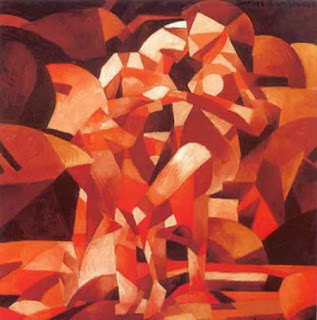Francis Picabia (1879-1953) was something of a modernist gadfly, taking on this movement and that before reverting to representational work for a considerable stretch of his career. This is summarized here in his Wikipedia entry.
Picabia is yet another member of the circa-1880 generation of painters (Pablo Picasso was another) who was aware of modernism yet received at least some traditional training before cutting loose on the exiting adventure of rejecting the past in favor of an innovative future.
In case you are not familiar with his modernist paintings, here are two examples.
Dances at the Spring - 1912
Balance - c.1919
And here are two landscapes that predated his move to modernism.
Riverbank - 1905
Sunlight on the Bank of the Loing River, Moret - 1905
As mentioned above, Picabia largely set aside modernism for a while. At first, he painted a number of works that were figurative, yet included modernist-seeming embellishments. By the early 1940s he did a large number of paintings of female nudes where poses were taken from a French magazine of the 1930s that featured girlie photos. Even a self-portrait was photo-based, as is shown below.
Mi - c.1929
Self-Portrait
Photo source for self-portrait
Viareggio - 1938
L'Espagnole - 1938
Deux nus - c.1940
This series is based on the question of how good a representational artist the modernist might have become had he never "gone modern." In Picabia's case, I see little evidence to indicate that he would have been more than a journeyman realist.









